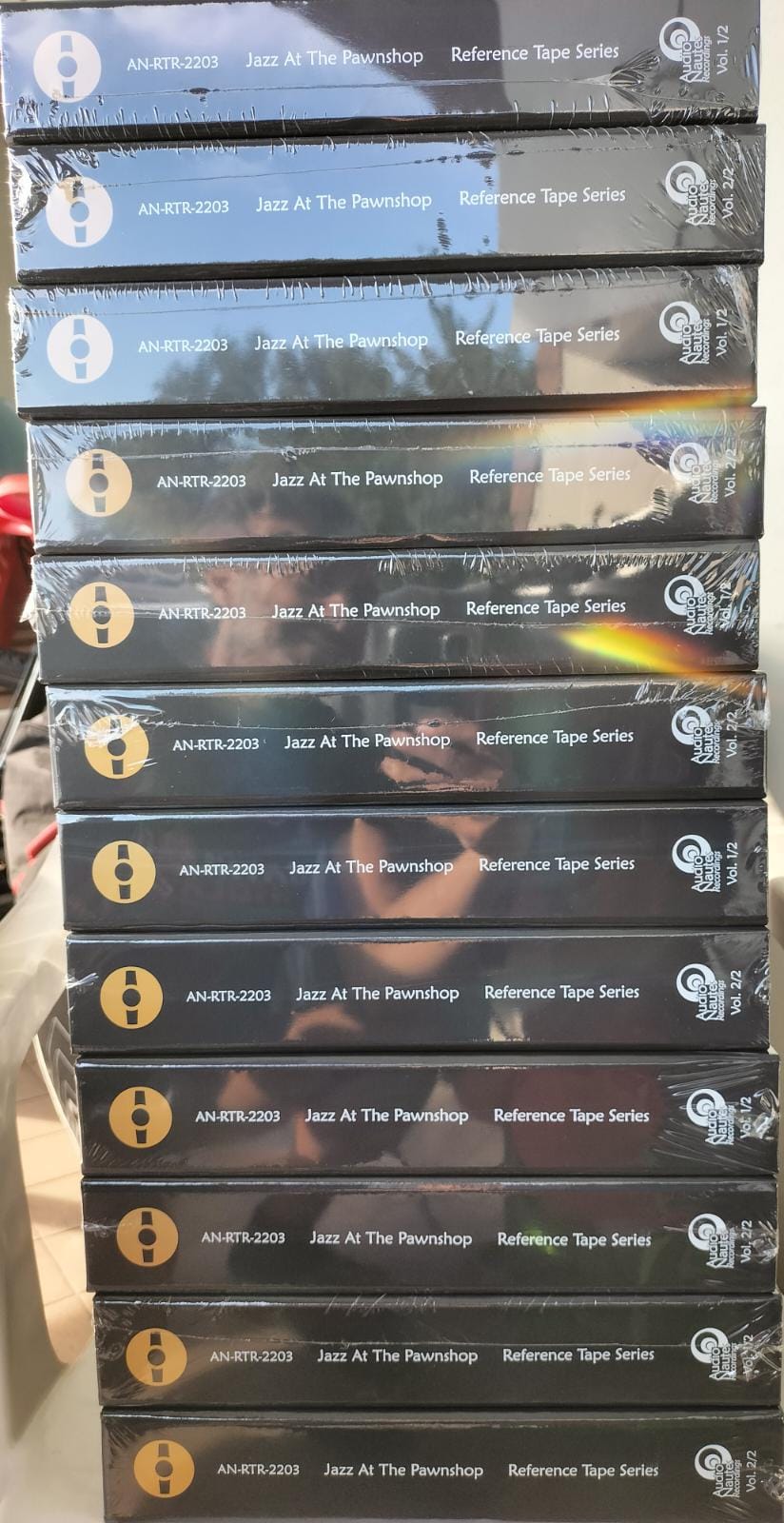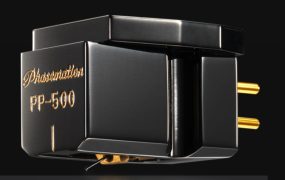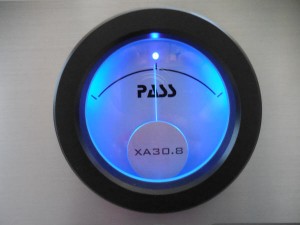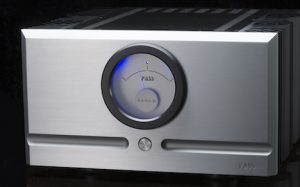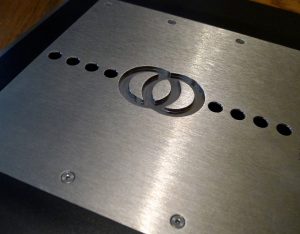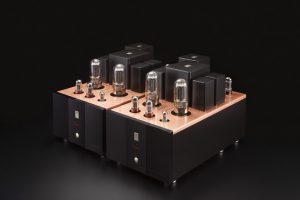Have Class-D amplifiers gotten a bad rap? Despite my colleague Guido Corona's enthusiastic review of Merrill Audio's Veritas amplifiers (HERE) some four years ago, the sound and performance of all Class-D amplifiers still tends to be lumped together and in the words of the immortal Rodney Dangerfield, "…don't get any respect." Is or isn't that knock deserved? Read on.
There's no question that Class-D amplifiers can deliver a lot of power in a small package; such as powering woofers in speakers. But quantity and quality are two separate things. Class-D amplifier's performance elsewhere in the audio frequency spectrum was at best disappointing and at worst thin, uninvolving, metallic, mechanical, flat, and washed out sounding. Most of all, their timbral qualities were simply off.
But things rarely stand still in high-end audio. Several companies—most notably among them Jeff Rowland and the subject of this commentary, Merrill Audio—have placed their reputations on the line with Class-D amplifier designs. Merrill Audio designer Merrill Wattasinghe stands behind his designs and describes the sound of his Class-D amplifiers with statements such as, "It is not cold. It is very musical, not clinical. Rather it is very nice and accurate" and "if you have a bad source, it will show up (PF, Issue 68)." Pretty bold statements and Merrill isn't afraid to back up his claims.
More than a few Positive Feedback readers are probably wondering at this point why in the world would a dyed-in-the-wool vacuum tube guy have any interest in listening to solid-state amplifiers, much less a Class-D amplifier? Has he gone stone cold crazy? Has early onset dementia set in? Luckily no on all counts. To begin with, it's my job to listen to and further educate myself about all the high-end audio equipment out there. Otherwise, I'm not doing my job. Then again, it's not about what I prefer but reporting on the sound of different components on the market for Positive Feedback readers. More significantly, however, the sound of the Merrill Audio amplifiers (within an all Merrill Audio electronics chain) caught my attention at the last two Axpona audio shows. The first time was two years ago at Axpona 2016 where Merrill brought his mid-priced Thor amplifiers to drive Reference 3A speakers; the next time was at Axpona 2017 where Merrill's Veritas amplifiers were driving the German Physics speakers. There was just something right and decidedly un-solid-statish about the sound of both audio systems.
No Ordinary Amplifier
Let's just say that you're in for a big surprise if you believe the only thing Class-D amplifiers are good for are bass amplifiers. The Veritas amplifiers 700 wpc (into 4 ohms) easily drove the Magico S5 Mk. 2 speakers while at the same time displaying very impressive resolution and transparency. No, it was patently clear from day three in the system that Merrill Audio's $12,000 Veritas monoblock amplifiers employing the Hypex Ncore NC1200 modules and switching power supply (SMPS) aren't your ordinary run-of-the-mill Class-D amplifier.
Speaking of time. Merrill suggested plugging the amplifiers in, turning on and leaving them powered up for three days (even though well used) before beginning any critical listening sessions. In addition, he recommended leaving the Veritas amplifiers on all the time (something I do anyway with solid-state and digital gear). He was spot on. For the first day, the amplifiers brought back memories of newly plugged-in electrostatic speakers before they are fully charged up. A little lean, a little lacking in dynamics and a little flat sounding. Not by any means terrible or unlistenable but clearly nowhere near what the amplifiers can deliver. More curious, though, is the amplifiers really didn't hit their stride until being left on for a couple of weeks. At that point, the midrange became more palpable and tonally fleshed out.
A couple of caveats before my impressions of the Veritas amplifiers. Problem number one turned out to be that my reference cj GAT Series 2 preamplifier wasn't compatible with the Veritas amplifier. conrad-johnson electronics are only equipped with SE outputs and the Veritas only has balanced inputs. So Merrill kindly dug up pair of Cardas single-ended to balanced connectors to connect the two pieces of electronics. Next, my reference Transparent Audio Gen 5 speaker and IC cables are calibrated for my cj gear. So rather than sending them back to Transparent Audio for recalibration, I decided to use for the better part of the review Audience's Au24 SX interconnect and speaker cables currently in for review. Towards the end, though, I replaced the Audience Au24 SX phono cables with my reference Transparent Audio differentially balanced phono cables, the Audience Au24 SX interconnect with the Transparent XL Gen. 5 link between my Doshi tape stage and GAT Series 2 preamplifier, and the Audience Au24 SX speaker cables with the Viero Equilibrio Level 3 speaker cables. Inserting the Transparent Audio and Viero cables into the system gave a much different perspective of the Veritas's capabilities and performance. Finally, like many manufacturers nowadays, Merrill assumes owners will use their own AC cable du jour and doesn't provide any power cords. So my tried and true Kubala-Sosna Emotion power cords were pressed into service.
Quantity and Quality in One Package
Make no mistake. The Veritas amplifiers aren't your typical sounding Class-D amplifier. Not one bit! The Veritas amplifiers err for the most part on the side of omission rather than commission. That little magical bounce that the best amplifiers—especially those of the tube persuasion—give you. It's not unlike what a professional jazz guitarist might implore from a novice: Play with more swing.
That aside, many audiophiles could live with quite happily with the Veritas amplifiers. Trust me. There's no hardness to these amplifiers; nothing drives me out of the listening room faster than upper midrange transistor-itis. Furthermore, it's no secret that Magico speakers ruthlessly reveal bright components and there's no listener fatigue with these amplifiers even after hours upon hours of listening to LPs or reel-to-reel tape.
The Veritas amplifiers stood out in several areas starting with their linearity. Here, their character sounded the same whether we're talking from the top to the bottom of the audio spectrum as well as when the music became louder. Upper octaves—often the Achilles heel of solid-state amplifiers—was extended, open sounding and capable of very fine resolution. Tonally, the Veritas amplifier was very neutral and simply let the instruments on each recording strut their self. There's perhaps no better test for tonality than Sidney Harth's opening violin solo at the opening of the second movement from the Analogue Productions 15-ips tape release of Reiner's Scheherazade. This cut quickly separates the men from the boys. The contenders from the pretenders. The Veritas's midrange performance—one area that first caught my ear at Axpona 2016—didn't disappoint. Harth's violin was alive and vibrant and strings sounded like strings. While the Veritas amplifiers weren't quite as rich as the older conrad-johnson ART monoblocks or the newest cj 40th Anniversary ART300s on the Magicos, neither did the amplifiers exhibit any traces of that stereotypical cold, sometimes steely, often tonally washed out Class-D sound.
Next was the amplifier's ease of presentation. The Veritas amplifiers weren't fazed one bit by the most dynamic LPs or 15 ips reel-to-reel tapes. Add to that the fact that the Veritas' imaged far better than most would expect from a Class-D amplifier, much less a solid-state amplifier. No telltale Class-D cardboard cut-out paper thin, two-dimensional images. Most telling, though, was the Veritas' ability to reproduce both instrumental and singer palpability. That was coupled with very the ability to separate and place each instrument (and others) on the stage. Nowhere was this more apparent than when listening to the Harth's violin solos or the violin and harp duets on the Analogue Productions 15 ips tape release of Reiner and Chicago Symphony Orchestra's recording of Scheherazade.
Then there's the amplifier's resolution floor and ability to retrieve detail and spatial information. In fact, the latter was very surprising and the Veritas might have even earned higher marks had I used my ultimate reference speaker cables. There was simply no mistaking the sense of a hall on the best classical recordings.
Finally there's the cool factor! Going back to the newly arrived conrad-johnson 40th Anniversary ART 300 amplifiers was an instant reminder just how much heat these behemoth tube amplifiers put out! Luckily Fall and Winter are approaching that allows me to maximize my listening time!
Bass, Resolution, Cable, and Performance Ceiling
Yes that's a weird quartet at first blush. But all these qualities went hand-in-hand when listening to the Merrill amplifiers. Plus there are take home messages here that carry real implications when evaluating any and all audio components. Particularly when we are talking about performance ceiling of equipment (not to mention recordings too!)
Let's begin with the amplifier's bass performance. The bulk of the listening sessions—as previously mentioned—were carried out using a full loom of Audience 24Au SX cables in the system (and eventually returned to the Transparent Audio cables for the front-end components [tape and turntable]); the Audience 24SX cables were first hooked up to my reference conrad-johnson gear to get a baseline after which the Merrill Audio Veritas amplifiers were inserted into the system. The Audience cables do have a midrange centric, pleasing "sound" and don't ever offend. Yet there was just something lacking in the low end. Especially for Class-D amplifiers that are known for their bass performance. The amplifiers just lacked oomph, separation, and authority in the low end. Yes, the lows were extended, but nothing like the low end of the recently reviewed Audia Flight Strumento No 4 stereo amplifiers. There had to be more down below.
Enter the Viero speaker cables. If any cable could bring out the Merrill Veritas's low end, it would be the Viero Equilibrio Level 3 speaker cables—the same Vieros that Mark Pearson reviewed in Issue 76 (HERE) and I commented on for PF in Issue 76 (HERE) which had been sitting on the sidelines. Nor did they did they disappoint. The Viero's immediately perked up the amplifier's bass performance. The low end just bloomed with recordings such as Frederic Rosselet performing Bach and Ligetti (Yarlung Records, 15-ips tape) or the Super Percussion LP (Super Analogue SSY19). Far more dynamics and presence. More power and authority. More grip on the cello. More detail and resolution. (required in spades on this recording too!)
But it wasn't just the low end that benefited from these speaker cables. The whole audio frequency spectrum from the lows to the highs came alive. Plus a healthy topping of midrange resolution and detail and upper octave definition. The amplifier's timbre and low level resolution—especially take the subtle added reverb tails such as on Dean Martin's Dream with Dean (Analogue Production APP45)—never betrayed the amplifier's Class-D lineage.
That brings us to the topic of performance ceiling. There are some components whose performance hits a wall no matter the associated components, front-end, speakers, cables, etc. At that point, what you hear is what you have. By contrast there are other components that continue to reveal things about your favorite recordings as the speakers improve, cables and other things around them improve. (I think that performance ceiling is particularly important to consider when building a system and choosing speakers!) Or their character changes. Or certain aspects of the equipment's performance continues to improve while other areas remain unchanged. It's evaluating components that fall into the latter class where one must be extra vigilant and where the Merrill amplifiers fall. The Merrill amplifiers have an extremely high performance ceiling and getting the most out of them requires some trial and error. Yes, you could probably make them sound thin and washed out like many other Class-D amplifiers. Yet with a little effort, you can also make them sound like reference components too.
There were still a couple of areas where the Veritas fell just short of ultimate. Not mind you a 3 or 4, but maybe a 7 out of 10 in these areas. One such area was completely retrieving the harmonic envelope of instruments. Here the Veritas proved very good at capturing the leading edge of the waveform but fell just a smidge short on getting the trailing edge of the harmonic envelope.
Next, the Veritas's just lack a little of the "swing" of the best amplifiers out there. That little bit of "bounce" that the best tube amplifiers can do and bring the music to life.
Lastly the Veritas were exceptionally dynamic but they weren't quite on the level of a much more expensive amplifier such as the D'Agostinos. Nor do they quite have the rock solid grip on the low end of the music say of the admittedly far more expensive amplifier. Needless to say, the Veritas acquitted themselves well on the Magicos that can be ruthlessly demanding and revealing of the amplifiers being used to drive them. Not just the low frequencies but all throughout the frequency spectrum.
Class-D Amplifiers Don't All Sound the Same
The Merrill Audio Veritas' aren't by any means cheap Class-D amplifiers nor do they look or sound the part either. These amplifiers are also far from the "prototypical" inexpensive, cold, threadbare, whispy and flat sounding Class-D amplifier. Or for that matter, pretty much any other Class-D amplifier. Anyone interested in the Veritas amplifiers should note, however, that the amplifiers come only with balanced input connections.
Couple that with resolution rivaling any Class-A to Z solid-state amplifier. Extremely linear sounding from the bottom to the top of frequency range. A very unmechanical feeling. No issues with driving power hungry speakers. A huge soundstage particularly when it comes to soundstage width. Exceedingly good transparency falling just short of the very best of breed. More spatial recovery than any Class-D amplifier nee many solid-state amplifiers.
So I'm in complete agreement with my colleague Guido that these Merrill Audio Class-D monoblocks merit serious consideration by audiophiles looking for reliable, cool running and efficient monoblock amplifiers that pays homage to music. Or a demanding, high resolution speaker. The time spent with Veritas amplifiers went a long way to dispelling the notion that solid-state amplifiers—much less a Class-D amplifier (!)—couldn't bring out the best in Magico speakers. To paraphrase Rodney Dangerfield, the Veritas amplifiers, "aren't just a bowl of pits."
Veritas Amplifiers
Reatil: $12,000 a pair
Merrill Audio










